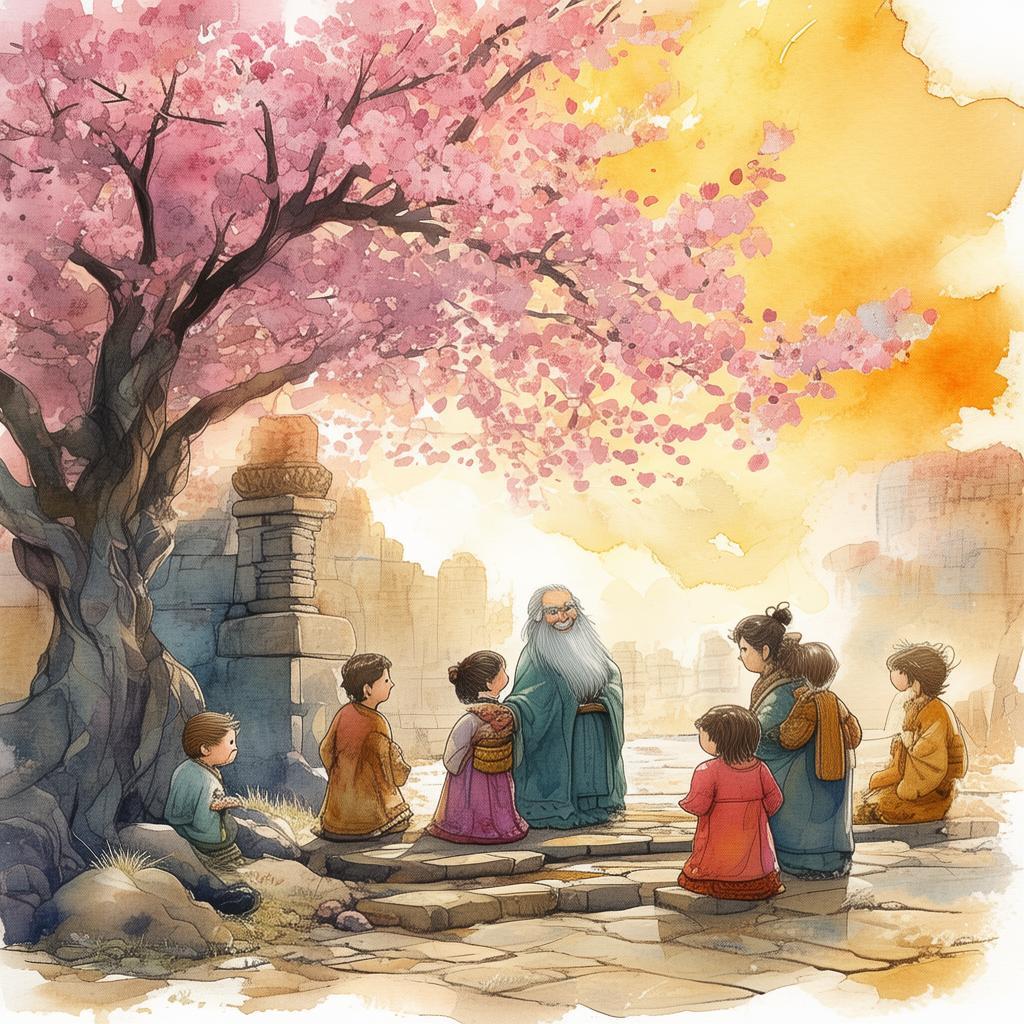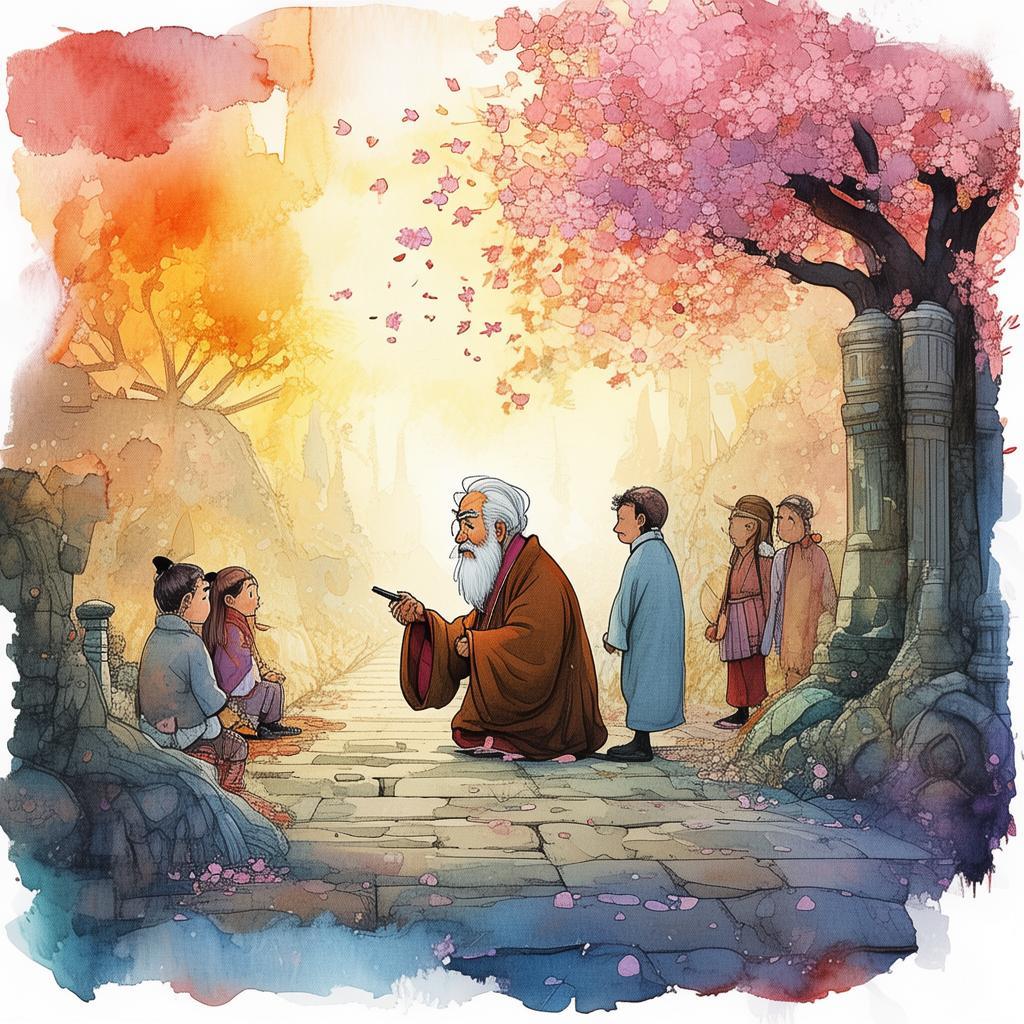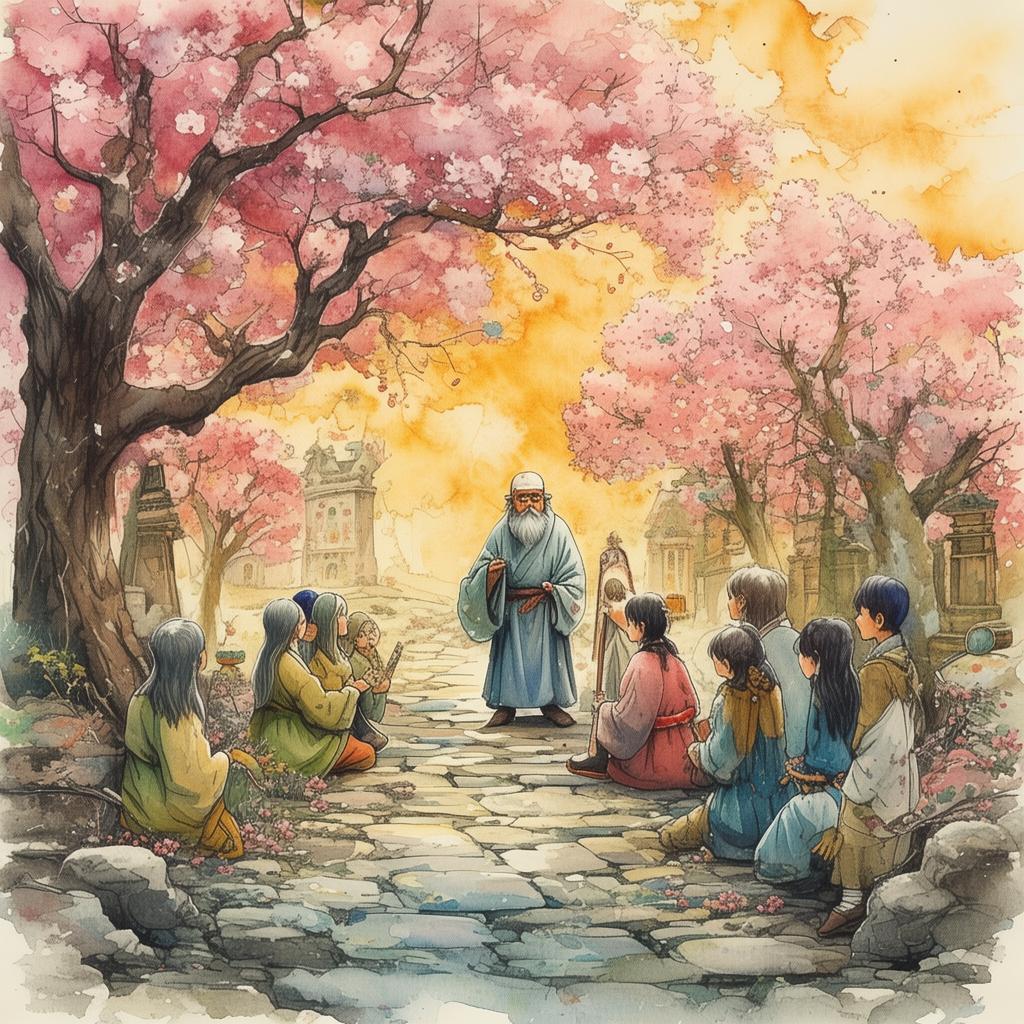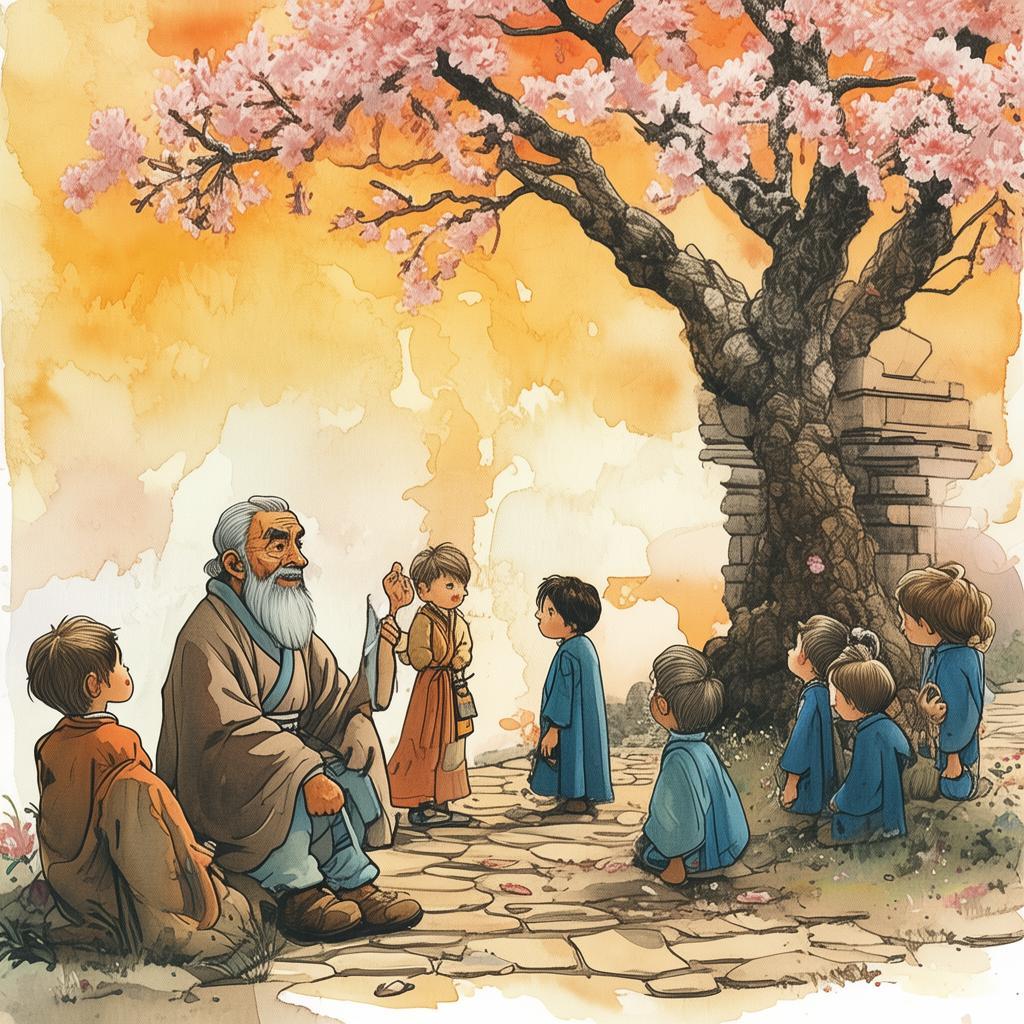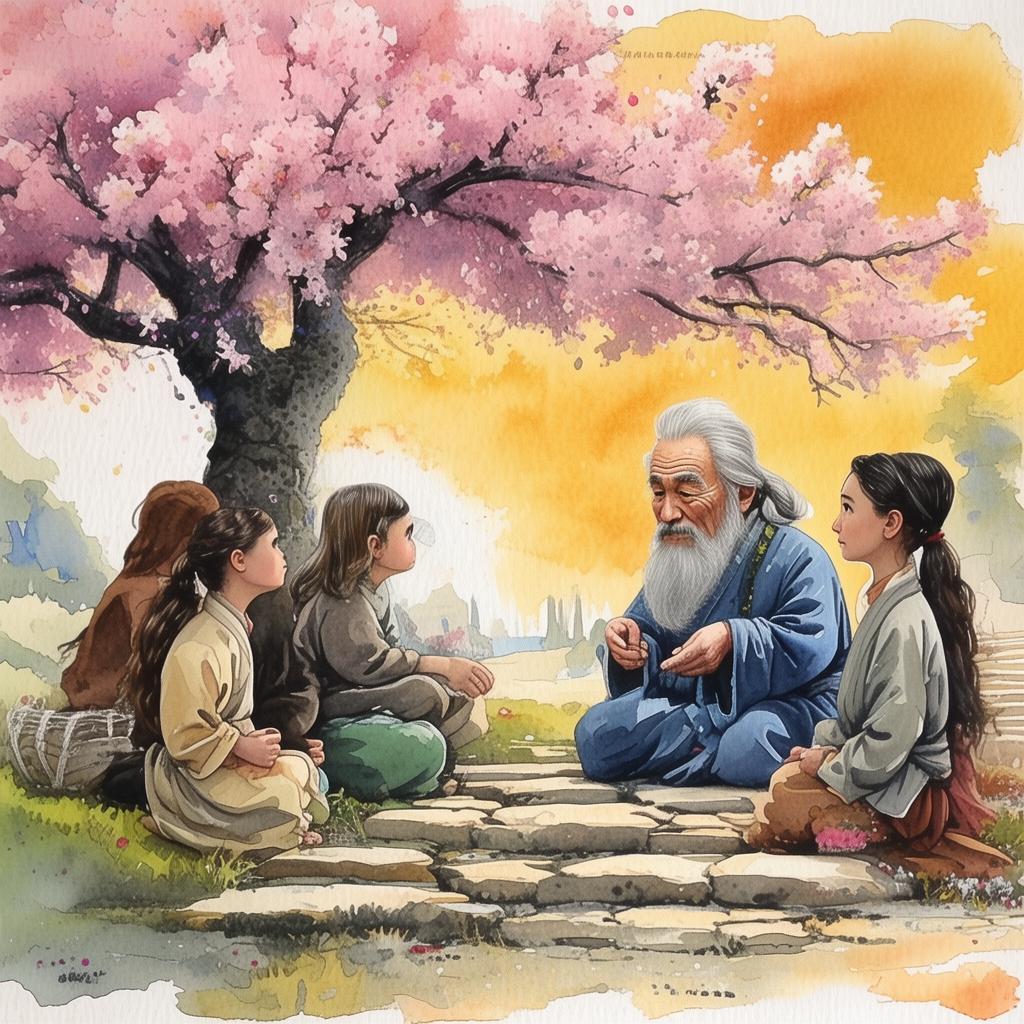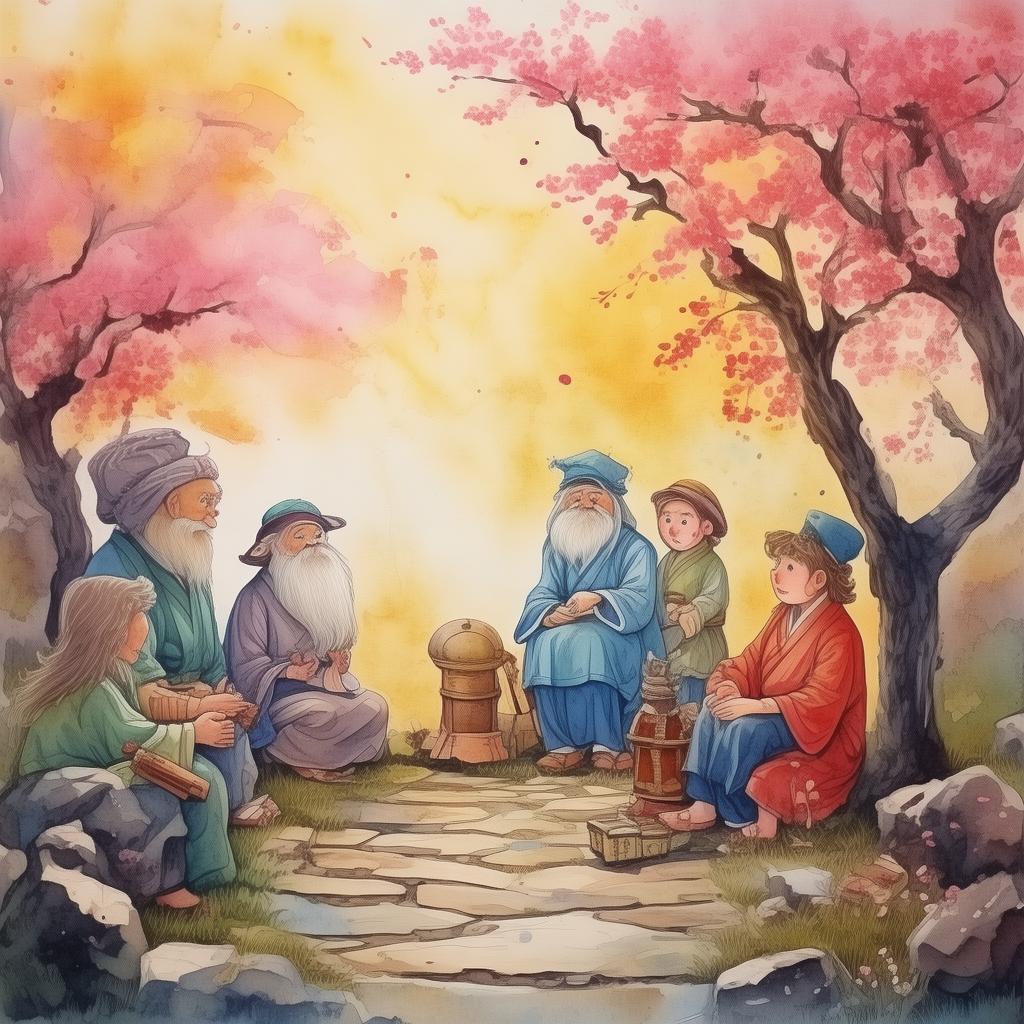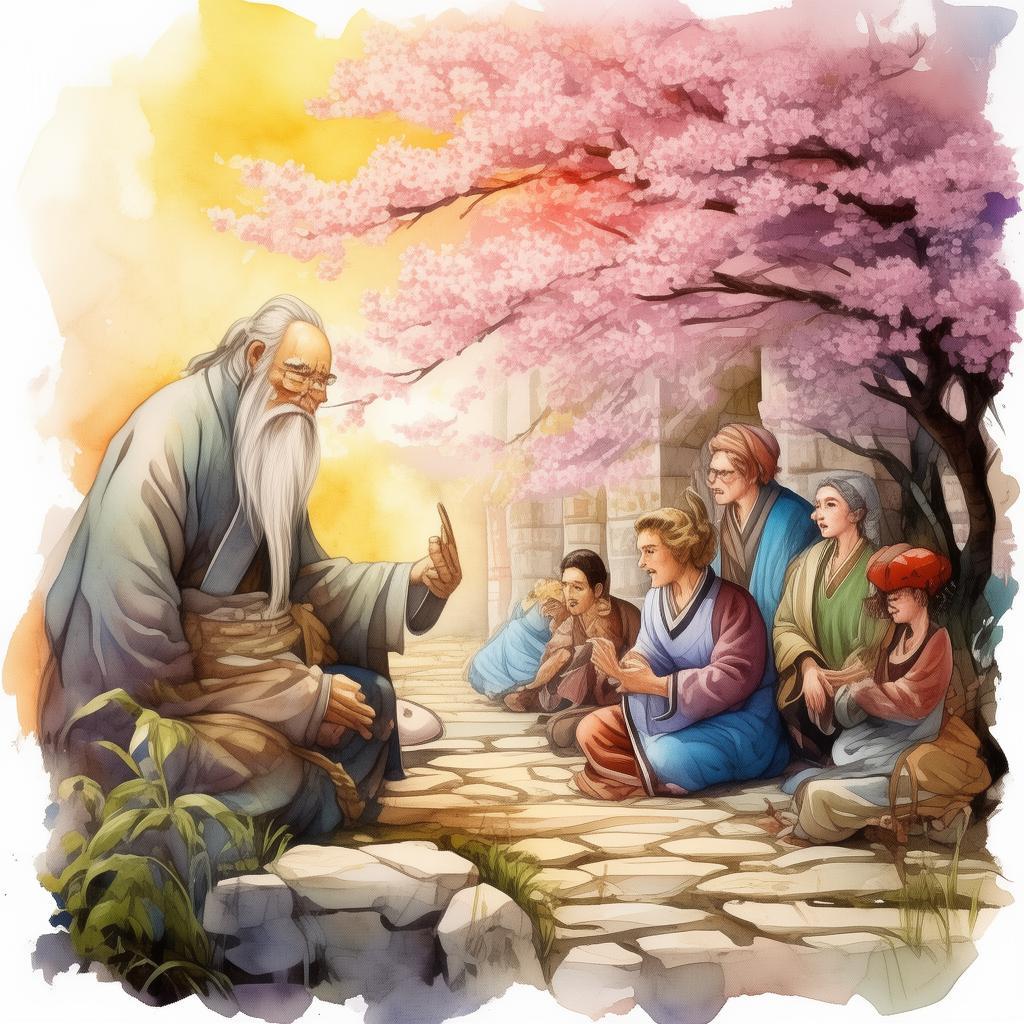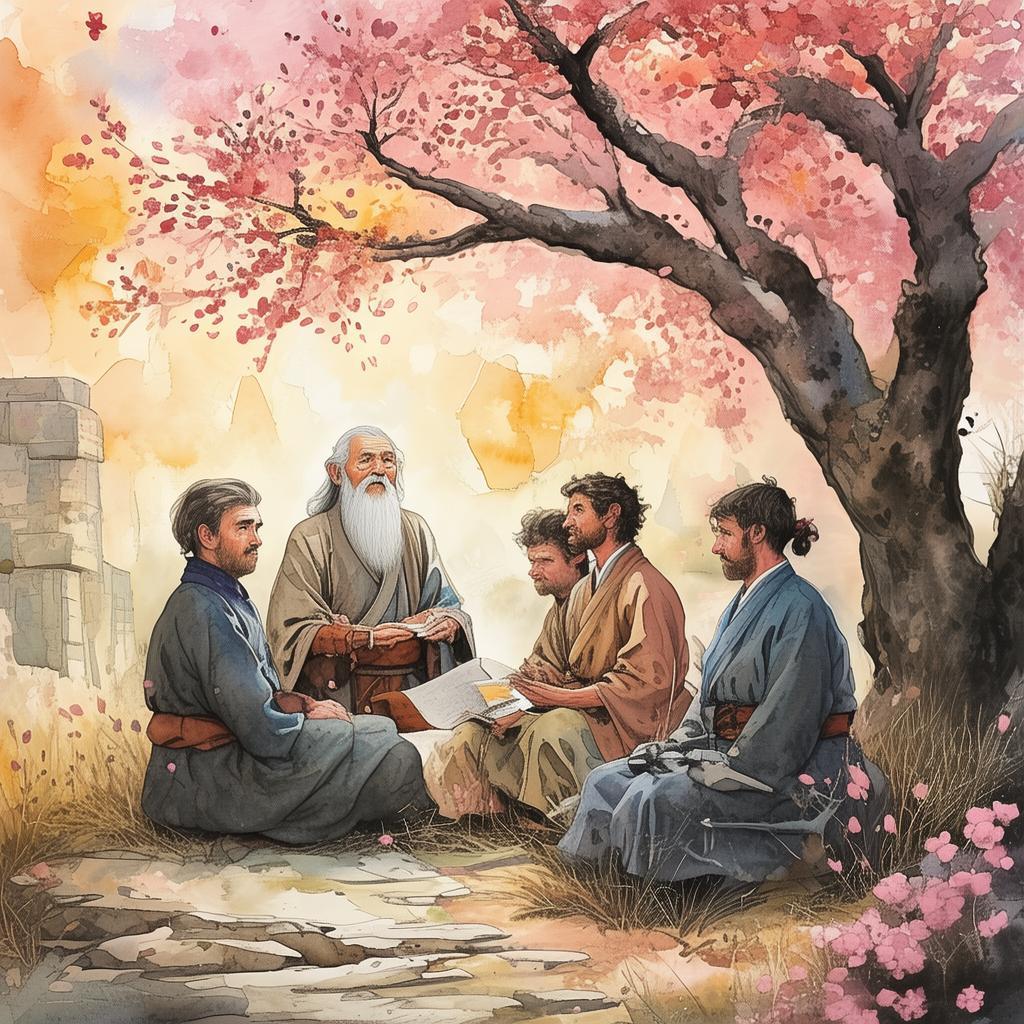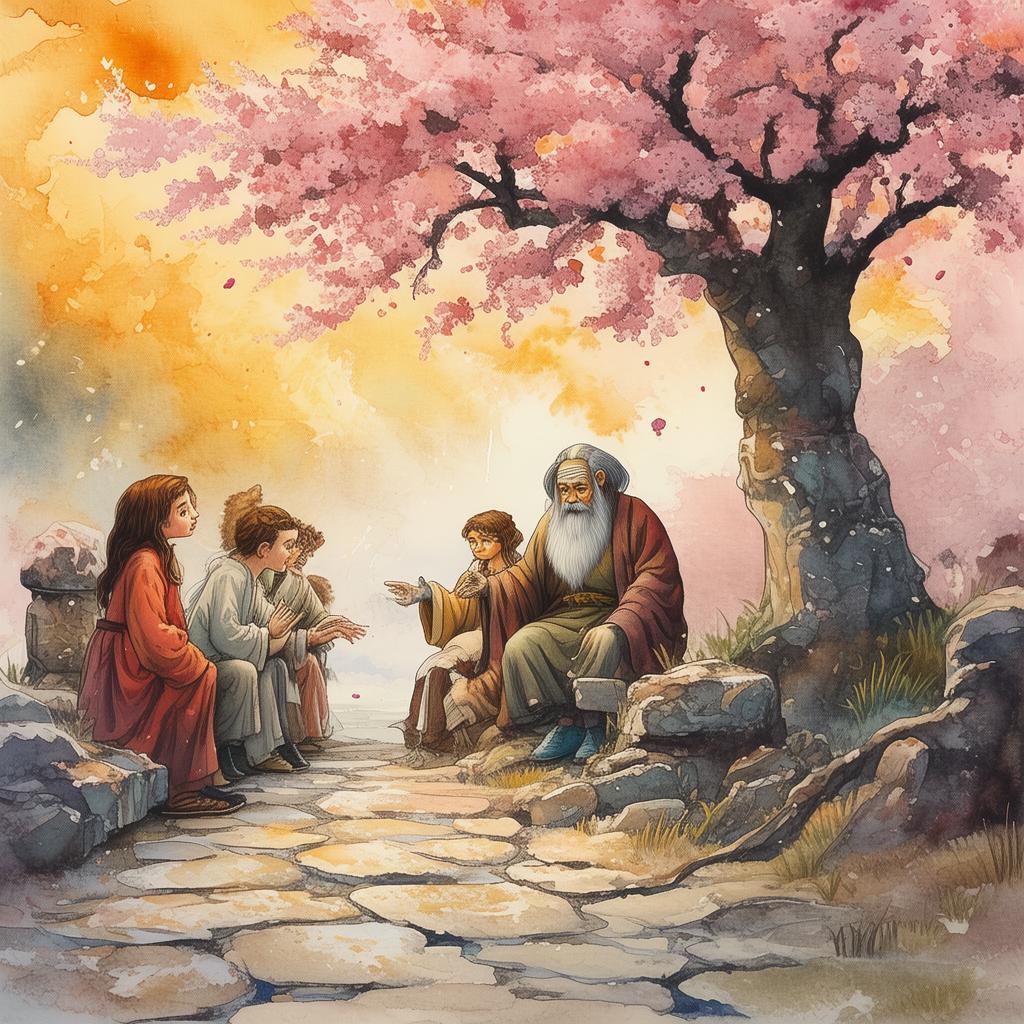The Pen That Carried the Weight of Emperors: A Tale of Loyalty and Calligraphy
In the heart of ancient China, where the calligraphy was more than ink on paper, it was a reflection of the soul. Each character, meticulously crafted, bore the weight of history and the whispers of the emperors. The capital city, a tapestry of ancient architecture and lush gardens, was the hub of this art, where the greatest scribes were revered like gods.
Amidst the grandeur stood a young man named Ming, whose hands had known the weight of a thousand brushes. He was the son of a renowned calligrapher, but unlike his father, Ming’s heart was not set on the emperors’ favor. His dream was to craft characters that would speak of the common man’s struggle and the strength of the human spirit.
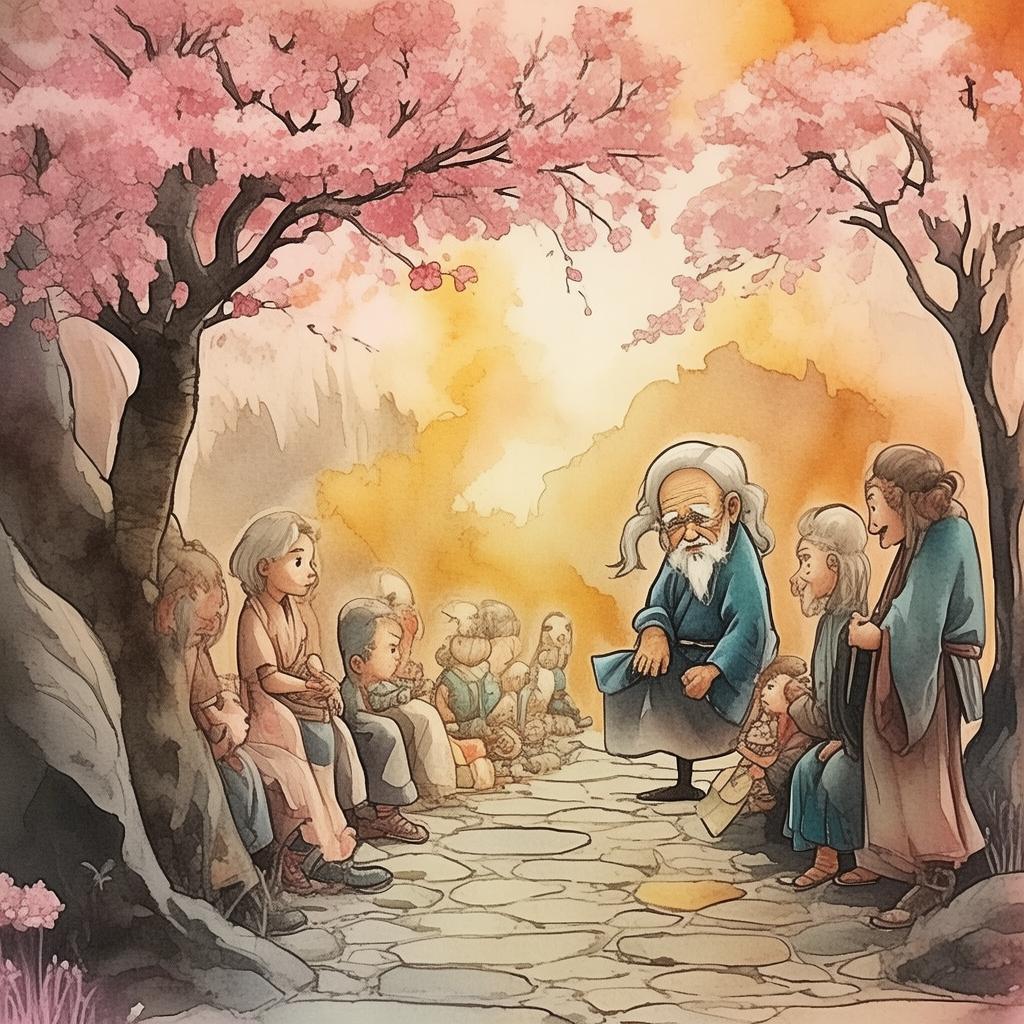
Ming spent his days in the serene quarters of the Imperial Library, where the scent of aged parchment and ink filled the air. The walls were adorned with scrolls that had been the testament to the might of emperors past, and the floor was etched with calligraphy so old that it seemed to pulse with the heartbeat of the ages.
One evening, as the moonlight filtered through the bamboo blinds, Ming found himself before a scroll that was different from the rest. It was an ancient scroll, its ink faded and its paper brittle, yet the characters seemed to glow with an inner light. The scroll was said to be the work of a master scribe who had vanished without a trace, leaving behind only this enigmatic testament to his art.
Ming’s heart raced as he unrolled the scroll. Each character was a work of art, each stroke a testament to the calligrapher’s skill and dedication. He spent hours studying it, mesmerized by the fluidity and the power of the strokes. It was as if the scribe’s spirit was trapped within the scroll, waiting to be released.
One night, as Ming lay in bed, the scroll’s calligraphy danced in his mind. He felt a strange compulsion to replicate it, to bring the master’s spirit to life through his own hands. With the moon as his only witness, Ming began to write, his brush moving with a life of its own.
As the morning light broke through the window, Ming’s father, a stern man known for his strict adherence to tradition, found the young scribe hunched over his desk, the scroll spread out before him. Ming’s hands were trembling, his breaths shallow, as he had written a passage from the scroll with a clarity and grace that took his father’s breath away.
“Why, Ming?” his father asked, his voice filled with disbelief and a hint of fear. “Why would you defile the scroll of a master scribe?”
Ming looked up, his eyes filled with resolve. “I don’t know, Father. But I felt it, a call to carry on his legacy. To show that calligraphy is not just for the emperors, but for everyone.”
His father’s expression softened, and he sighed. “Very well, Ming. But remember, with great power comes great responsibility. The weight of tradition and history rests on your shoulders.”
Days turned into weeks as Ming continued to write, his brush dancing with the same life that had once filled the master’s hands. He became the talk of the city, his name synonymous with the scroll of the vanished scribe. The emperors took notice, and soon Ming was summoned to the palace to showcase his work.
In the grand hall of the palace, the emperors sat in their thrones, their eyes fixed on Ming as he wrote. The room was hushed, save for the soft sound of his brush against the paper. When he finished, the room erupted in applause, the emperors’ faces alight with admiration.
But Ming’s joy was short-lived. The emperor, a man of great power and ambition, saw in Ming’s calligraphy a threat to his rule. He decreed that calligraphy was to be the exclusive domain of the imperial court, and all others were forbidden to practice it.
Ming knew that his days were numbered. He knew that the scroll of the vanished scribe was a beacon of his defiance, a symbol of the freedom to express oneself through art. He knew that his pen had become the weight of the emperors, and he was ready to bear it.
On the night of his arrest, Ming returned to the scroll that had first called to him. He unrolled it, his eyes tracing the characters that had become his life. With a deep breath, he took his pen and wrote a single character, the one that would symbolize his defiance and his freedom.
As the ink dried, Ming whispered a silent promise to the spirit of the master scribe. “I will carry on your legacy, even if it means the end of my own.”
The next morning, as the sun rose, Ming was found in his cell, the scroll still unrolled on his desk. The character he had written was the one that would change the course of calligraphy forever, the one that would give voice to the voiceless and the beauty to the oppressed.
The emperors’ decree was met with rebellion, and soon the art of calligraphy was no longer the exclusive preserve of the elite. It became a language of the people, a testament to the power of creativity and the indomitable spirit of the human soul.
Ming’s name was remembered, not as the scribe of the emperors, but as the man who gave calligraphy to the people. His pen, once the weight of emperors, became the weight of a nation, and in the end, it was the weight that carried him to the pinnacle of calligraphy quality.
✨ Original Statement ✨
All articles published on this website (including but not limited to text, images, videos, and other content) are original or authorized for reposting and are protected by relevant laws. Without the explicit written permission of this website, no individual or organization may copy, modify, repost, or use the content for commercial purposes.
If you need to quote or cooperate, please contact this site for authorization. We reserve the right to pursue legal responsibility for any unauthorized use.
Hereby declared.
